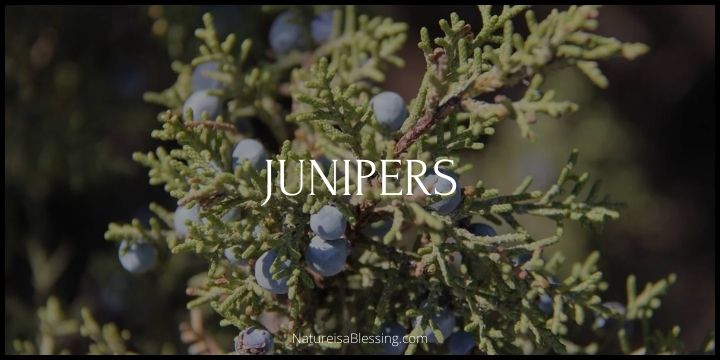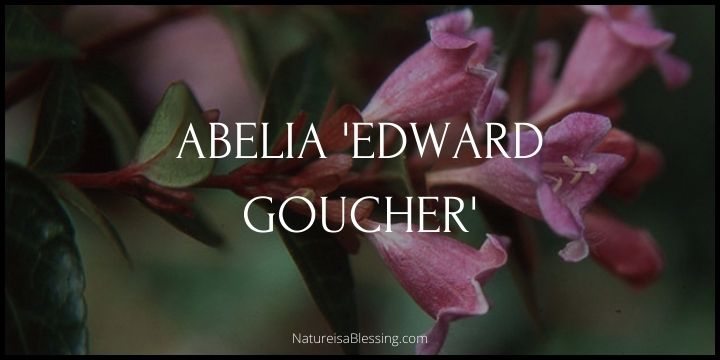Firepower Nandina: How to Plant, Grow, and Care

What is Firepower Nandina?
Firepower Nandina, known scientifically as Nandina domestica ‘Fire Power’, is a captivating evergreen shrub that brings a burst of color to any landscape. This plant’s unique appeal lies in its vibrant foliage that changes colors with the seasons. In spring and summer, the leaves boast a lush green hue that contrasts beautifully against its bright red berries. As autumn approaches, the leaves transform into a fiery display of crimson, living up to its ‘Fire Power’ moniker.
This dwarf variety of the Heavenly Bamboo family stands out with its compact size, typically reaching a height and width of 2 feet, making it an excellent choice for borders, hedges, or container gardening. Despite its common name, it’s not a bamboo at all but rather a member of the Berberidaceae family.
But the Firepower Nandina is not just about good looks. It’s also known for its hardiness and adaptability. It thrives in a variety of soil conditions and can tolerate both full sun and partial shade. This makes it a versatile choice for gardeners across different climates and regions. Plus, it’s relatively low-maintenance, requiring minimal pruning and watering once established.
The Firepower Nandina is truly a plant for all seasons. Its stunning color transformations, resilience, and easy-care nature make it a worthy addition to any garden. Whether you’re an experienced gardener looking for a new plant to experiment with, or a beginner seeking a reliable and attractive shrub, the Firepower Nandina is sure to ignite your interest.
Fast Facts About Firepower Nandina
| Property | Description |
|---|---|
| Country Or Region Of Origin | Eastern Asia, Japan |
| Plant Type | Shrub |
| Family | Berberidaceae |
| Genus | Nandina |
| Sun Exposure | Full Sun to Partial Shade |
| Season of Interest | Fall, Winter |
| Water | Medium |
| Maintenance level | Low |
| Growth rate | Slow |
| Height | 1.5 to 2 feet (45 to 60cm) |
| Spread | 1.5 to 2 feet (45 to 60cm) |
| Spacing | 2 to 3 feet (60 to 90cm) |
| Soil Type | Loamy, sandy, clay |
| Soil pH | Acidic to slightly alkaline |
| Soil Drainage | Well-drained |
| Habit/Form | Compact, Upright |
| Attracts | Birds |
| Characteristics | Showy fruit, colorful foliage, no serious pests or diseases |
| Tolerance | Drought, air pollution |
| Suggested Use | Border, mass planting, container or above-ground planter |
| USDA Plant Hardiness Zone | 6 to 11 |
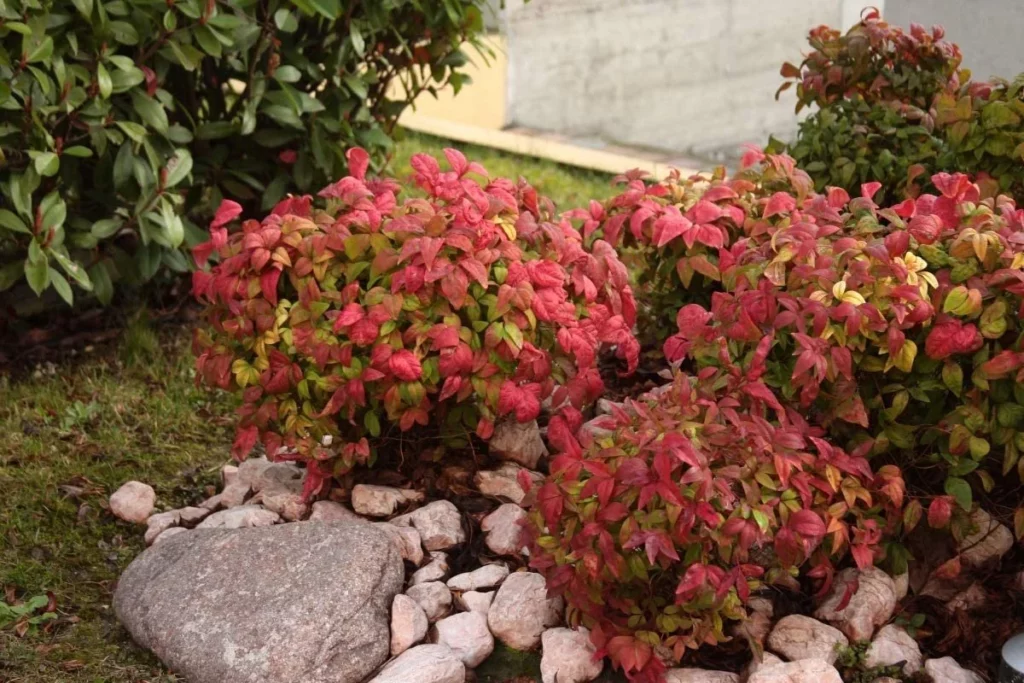
How to Plant and Grow Firepower Nandina
Step 1: The best place to plant Firepower Nandina
The best place to plant Firepower Nandina is in a location where it receives full sun to partial shade, ideally with protection from cold winds. This evergreen shrub can be remarkably adaptable, transitioning effortlessly from different light conditions and from moist to dry soils. However, a well-drained, partially acidic soil is considered best for this plant’s thriving growth.
While it can adapt to various environments, for optimal results, it’s suggested to grow the shrub in a sheltered spot away from strong winds, especially in colder regions where it may need protection from frost. Remember, this plant does best when allowed to grow to its natural form, requiring only minimal pruning of brown leaves or dead branches as needed.
Step 2: Preparing the Planting Hole and Planting
In preparing the planting hole for Firepower Nandina, it is crucial to dig a hole that’s at least two to three times wider than the plant’s root ball and of the same depth as the root ball. This ensures the roots have enough space to spread out and anchor themselves into the surrounding soil.
The top of the root ball should be level with or slightly above the ground surface. If you’re planting in a pot, make sure it has good drainage holes.
For optimal growth, disturb the surface roots gently before planting. This can be done using your fingers or a gardening tool.
Also, prune any damaged roots. Once the hole is prepared and the plant is set, backfill the soil around the plant, ensuring it’s firm but not overly compacted. Remember to keep the soil consistently moist but avoid overwatering.
Step 3: The Watering Process
The watering process for Firepower Nandina is crucial to its growth and development. This plant is known for its drought tolerance, particularly once established. However, during the first year after planting, it requires regular watering to ensure proper root establishment. It’s essential to maintain a balance, as constantly soggy or wet soils can cause problems with root health.
During extremely hot or dry conditions, additional watering may be necessary to prevent wilting and stress. A practical tip is to apply a three-inch layer of mulch around the base of the plant. This helps retain soil moisture and regulate temperature.
In winter months, watering needs may be reduced due to dormancy and cooler temperatures. However, if the winter season is particularly dry, occasional watering might still be necessary. Always check the soil’s moisture level before watering, aiming for moist but well-drained soil.
Step 4: The Fertilizing Process
The fertilizing process for Firepower Nandina is typically done in the spring, which is when the plant starts showing new growth. To promote optimal foliage color, use a general-purpose fertilizer meant for shrubs.
If you’re growing your Nandina in a pot, consider using a timed-release or water-soluble fertilizer as directed on the product label. For Nandinas planted in nutrient-poor soil, you might need to fertilize three to four times annually.
When applying the fertilizer, it’s recommended to mix it at a rate of 1 tablespoon for every 1 gallon of water, which should be enough to fertilize 10 square feet of planting space. Reapplication should be done as necessary. For best results, we also recommend a light yearly feeding of a Rhododendron or Evergreen type of fertilizer.
Step 5: Monitor the Health of the Plant
Keep an eye out for any changes in leaf color or signs of pest infestation.
While Firepower Nandina is relatively disease-free, it can occasionally suffer from pests like aphids or scale. If noticed, treat with an appropriate insecticidal soap or oil.
Step 6: Expecting Blossoms and Growth
Firepower Nandina is grown primarily for its vibrant foliage rather than its flowers. The foliage color changes throughout the seasons, starting green in spring, turning to bright red in summer, and deepening to burgundy in fall and winter. The plant has a slow growth rate, reaching its full height of 1.5 to 2 feet in about 2 to 3 years.
Step 7: Pruning and Maintenance
This plant requires little pruning. If necessary, prune in late winter or early spring to maintain size and shape. Remove any dead or damaged branches as they appear.
By following these 7 steps, you can enjoy the year-round beauty of Firepower Nandina in your garden. Its vibrant foliage adds a splash of color to any landscape and serves as a stunning contrast to green-leaved plants.
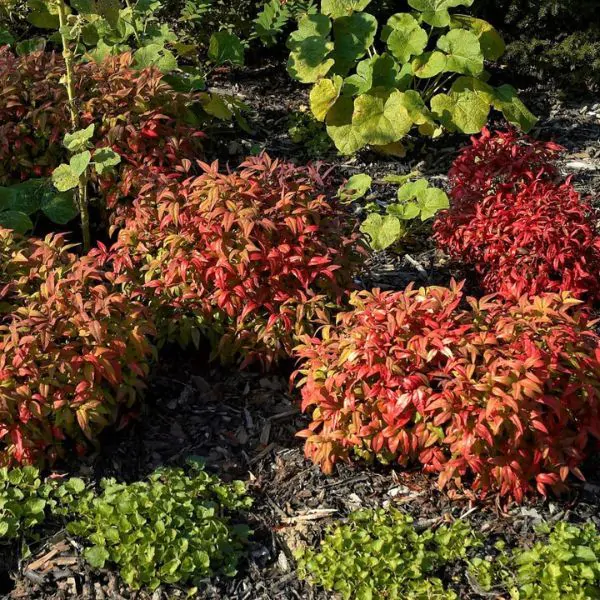
How Big Do Firepower Nandinas Grow?
Firepower Nandina typically grows to only 2.25 feet tall and as wide. In an extremely optimal environment, the plant can reach up to 3 feet in height and width at full maturity. It generally maintains a rounded form, growing to about 2 to 2.5 feet tall and wide.
What Does Firepower Nandina Symbolize?
| Symbolism | Details |
|---|---|
| Good Luck | Nandinas are often considered a gardener’s good luck charm. This belief is common in several cultures, particularly in Asia. |
| Natural Beauty and Minimal Care | The unique growth habit of Nandinas and their ability to thrive on very little care and no pruning symbolizes natural beauty and minimal care. |
| Vibrancy and Energy | The vibrant red foliage of the Firepower Nandina, especially during fall and winter, symbolizes vibrancy and energy. |
| Resilience | Firepower Nandina’s ability to thrive in full sun or partial shade, along with its evergreen nature, symbolizes resilience. |
| Change and Transformation | The change in color from reddish to fiery scarlet in the fall can symbolize change and transformation. |
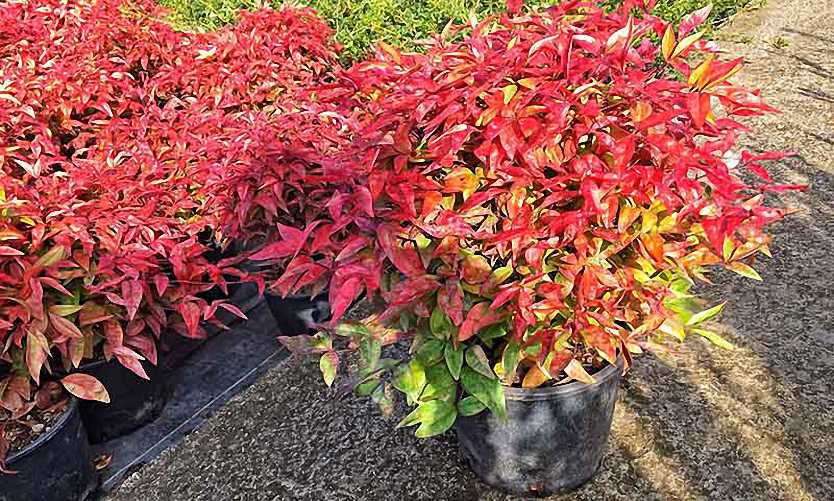
The Pros and Cons of Firepower Nandina
Benefits:
- Year-Round Interest: Firepower Nandina offers vibrant color changes throughout the year, making it a visually appealing addition to any garden or landscape.
- Low Maintenance: This plant is easy to care for and requires minimal maintenance. It is resistant to most pests and diseases, and can tolerate a variety of soil conditions.
- Drought and Cold Tolerant: Firepower Nandina is resilient to both drought and cold temperatures, making it a versatile choice for different climates.
- Compact Size: With its compact growth habit, Firepower Nandina can fit well in small gardens or landscapes, or as a border plant.
- Evergreen: Unlike many other plants, Firepower Nandina retains its foliage throughout the year.
Drawbacks:
- Invasive Potential: Nandina domestica, including the ‘Firepower’ cultivar, can spread via suckering roots and become invasive in some regions.
- Toxic Berries: The berries produced by Nandina domestica can be harmful to birds and other wildlife if ingested in large quantities.
- Less Fruit Production: Some gardeners find that ‘Firepower’ Nandina does not produce as many berries as other varieties, which may be a drawback if you’re seeking a plant for its ornamental fruit.
- Sunlight Requirement: Firepower Nandina needs full sun to partial shade to thrive. In heavily shaded areas, it may not grow as vigorously or display its characteristic vibrant colors.
- Soil pH Sensitivity: While it can tolerate a variety of soil conditions, Firepower Nandina prefers slightly acidic soil and may struggle in highly alkaline conditions.

Interesting Pairing Ideas for Firepower Nandina
| Plant | Reason for Pairing |
|---|---|
| Jatropha | The red flowers of jatropha contrast beautifully with the bright foliage of Firepower Nandina. |
| Azaleas | The delicate flowers and foliage of azaleas can complement the robust structure of Nandina. |
| Hydrangeas | Hydrangeas can provide a beautiful backdrop for the vibrant colors of Nandina. |
| Hostas | The broad leaves of hostas can create an interesting textural contrast with the finely divided leaves of Nandina. |
| Grasses | Ornamental grasses can add movement to your garden and contrast with the static form of Nandina. |
| Camellias | The glossy foliage and winter blooms of camellias can complement Nandina’s winter interest. |
Where to Buy Firepower Nandina?
The 6 Best Firepower Nandina Alternatives
| Alternative | Explanation |
|---|---|
| Winterberry (Ilex verticillata) | This plant can serve as a great replacement for Nandina berries, especially mature winterberries which can produce spectacular red berries. |
| Agarista populifolia (Florida Hobblebush) | This U.S. native plant is suggested as an alternative to Nandina domestica due to its similar aesthetic appeal. |
| Aralia spinosa (Devil’s Walking Stick) | Another U.S. native plant that can serve as a replacement for the Heavenly Bamboo. |
| Itea virginica (Virginia sweetspire) ‘Little Henry’ | If you have small Nandina that you want to replace with another small shrub, this could be a good option. |
| Sterile, non-invasive Firepower Nandina | This variant of Nandina is recommended as it does not invade other plants in the landscape. |
| Flirt Nandina | Makes the best groundcover of all the varieties and is non-invasive. |
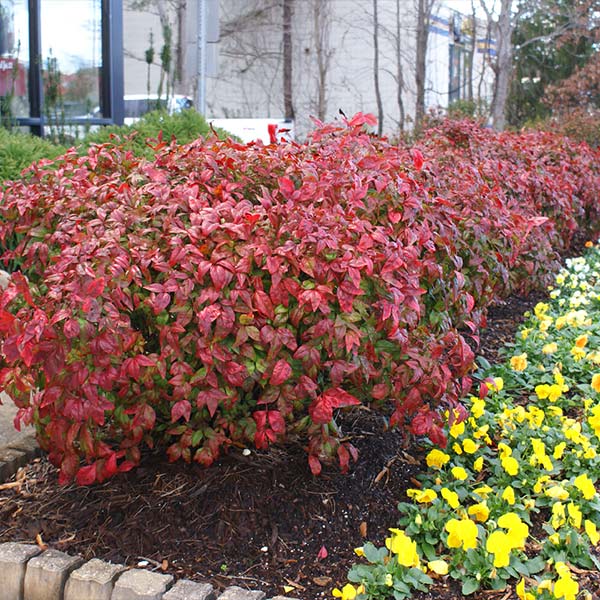
The History and Origin of Firepower Nandina
Scientific Classification: Kingdom: Plantae Order: Ranunculales Family: Berberidaceae Genus: Nandina Species: Nandina domestica
Geographical Origins and History
Nandina domestica, commonly known as Heavenly Bamboo or Sacred Bamboo, is native to eastern Asia, from the Himalayas to Japan. Despite its common name, it is not a true bamboo but rather a member of the Berberidaceae family. It was introduced to the Western world in the 1800s as an ornamental plant.
Timeline and Significant Events
The ‘Firepower’ cultivar of Nandina domestica was developed in New Zealand in the late 20th century. It quickly gained popularity due to its vibrant red foliage and compact growth habit, which made it ideal for use in small gardens and landscapes.
Horticultural Usage
Nandina domestica ‘Firepower’ is prized for its year-round interest and low maintenance needs. Its leaves start off green in spring, turn to a mix of orange-red and yellow in fall, and then become fiery red in winter. This vibrant color display, combined with its resistance to pests and diseases, makes it a popular choice for borders, mass plantings, and container gardens. It’s also used as a ground cover due to its dense, clump-forming habit.
Unique Characteristics:
One of the unique characteristics of ‘Firepower’ Nandina is its ability to retain its foliage throughout the year, unlike many other deciduous plants. Additionally, it can tolerate a wide range of soil conditions and is resilient to both drought and cold temperatures.
Potential Dangers or Limitations:
While this plant has many desirable traits, there are some potential limitations to be aware of. Firstly, it’s considered invasive in some regions due to its ability to spread via suckering roots. Secondly, the berries produced by Nandina domestica can be toxic to birds and other wildlife if ingested in large quantities. Some gardeners also find that ‘Firepower’ Nandina does not produce as many berries as other varieties, which may be a drawback if you’re seeking a plant for its ornamental fruit.
Frequently Asked Questions
1. Does Firepower Nandina need full sun?
Yes, Firepower Nandina thrives in full sun, which enhances its foliage color. However, it can also tolerate partial shade. In zone 9, the plant may benefit from some protection from intense afternoon sun. While it can survive in full shade, its growth may be less dense and the color less vibrant. It’s a versatile plant that adapts to different light conditions, but for optimal growth and color, full sun to part shade is recommended.
2. Is Firepower Nandina poisonous?
Yes, Firepower Nandina (Nandina domestica ‘Fire Power’) is considered toxic. All parts of the plant, including the berries, contain hydrogen cyanide which can be highly poisonous if ingested in large quantities. It’s toxic to humans, cats, dogs, livestock, horses, and certain birds such as the Cedar Waxwing. However, it’s important to note that it falls under Toxicity Category 4, which means it’s “generally considered non-toxic to humans” unless consumed in large amounts.
3. Is Firepower Nandina easy to grow?
Yes, Firepower Nandina (Nandina domestica ‘Firepower’) is considered easy to grow. It is known for its hardiness and disease resistance, and requires minimal maintenance. This plant adapts well to a variety of soil conditions and can tolerate both full sun and shade. It also requires only a minimal amount of pruning. Furthermore, it’s an evergreen plant that offers dramatic color-changing foliage throughout the year.
4. Can Firepower Nandina grow in pot?
Yes, Firepower Nandina can be grown in a pot or container. It’s well-suited for outdoor container gardening due to its compact size and vibrant color. However, the plant may require protection during winter if it’s in a pot, especially in colder climates. A young, actively growing Nandina may need repotting about every 2 years. The chosen container should be large enough to accommodate the shrub’s growth.
Also read:
